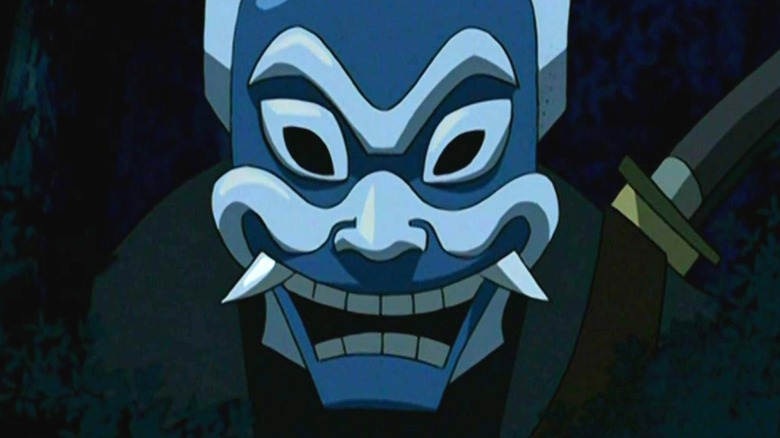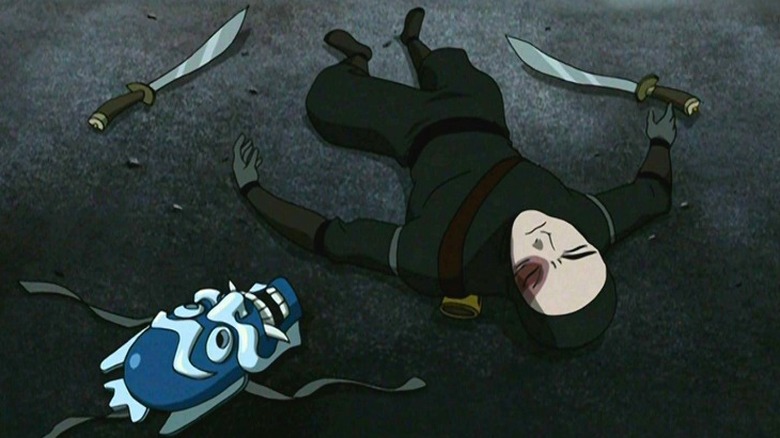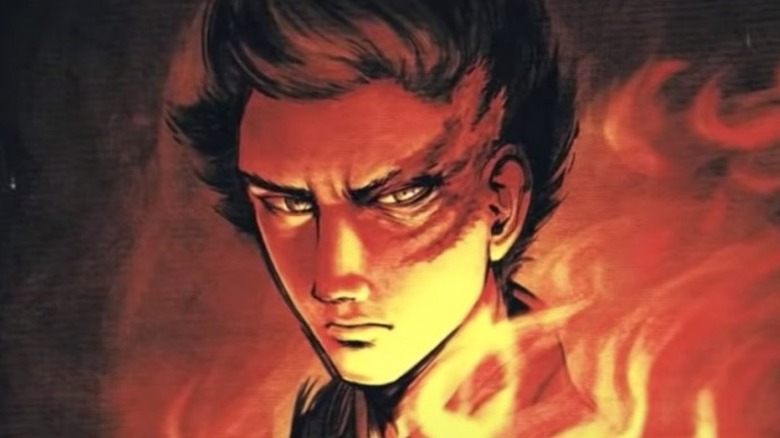The Unexpected Origin Of Zuko's Blue Spirit From Avatar: The Last Airbender
Prince Zuko (Dante Basco) of the Fire Nation is known for many things: his tragic backstory, his redemption arc, and of course, his obsession with honor. But amid his often foolhardy attempts to please his father and best his sister, Zuko has some impressive talents as well. In addition to his prowess in firebending, his hand-to-hand combat skills may be what are truly worthy of writing home about. While Azula (Grey Griffin) may be a bending prodigy, Zuko truly excels at the art of wielding his dual broadswords — a talent that does not require the pomp and circumstance of bending.
Zuko first uses this skill outright in Season 1 while trying to capture Aang (Zach Tyler Eisen). After the Avatar is taken prisoner by Commander Zhao (Jason Isaacs), Zuko breaks in, clad in a Blue Spirit mask, and frees him, marking the start of Zuko's redemption arc as the character begins the inner battle for his soul. And in a series rife with symbolism and double meaning, the "Avatar: The Last Airbender" showrunners delved deep into the creative well to come up with the idea behind Zuko's Blue Spirit mask.
The mask's color was an important misdirect
At first glance, the Blue Spirit mask may appear to be ordinary, but the creators of "Avatar: The Last Airbender" developed Zuko's alter ego a little more specifically. When it was first devised, Bryan Konietzko and Michael Dante DiMartino had the thought to match the color of the nation to the color of the mask, making red the obvious choice due to Zuko's affiliation with the Fire Nation (via CBR). But the creatives behind the show realized quite quickly that the Red Spirit was not meant to be.
Konietzko stated in "Avatar: The Last Airbender — The Art of the Animated Series," that the red mask did not achieve the aesthetics that they were going for. Instead, it looked more like "an ancient Korean version of Spiderman." So the color blue was chosen and the Blue Spirit was born.
Changing the mask from red to blue was not only a visual choice but also one that made sense for the story. Because blue is typically the color most connected to the Water Tribe, it is also a clever way to obscure Zuko's identity. When Aang unmasks Zuko at the end of the episode, it is a genuine surprise that his savior is his biggest adversary. One thing viewers don't learn, however, is where the young prince obtained the mask. Only references in other "Avatar: The Last Airbender" material give a clue to its in-universe origin.
The mask makes several appearances in the comics
The live-action film "The Last Airbender" may be considered M. Night Shyamalan's worst movie, but it did create an interesting path to more Blue Spirit content. In conjunction with the film release, a graphic novel titled "Zuko's Story" set in the aftermath of Zuko's ill-fated Agni Kai with Firelord Ozai (Mark Hamill) was published.
Zuko is banished and begins his long journey toward redemption. Along the way, he encounters Hong Shen, a vigilante who goes by the name the Red Spirit. This is the beginning of Zuko's disillusionment with the Fire Nation. He sees how Shen uses the Red Spirit to help others and is inspired to take up a similar moniker. At the end of the story, Shen gives Zuko his dual broadswords as well as the Blue Spirit mask, which he later uses in the animated series.
But that is not the only demonstration of the Blue Spirit mask in the comics. After the conclusion of "Avatar: The Last Airbender," the stories of Aang and his friends continue as they try to shape the new world they have built. In the graphic novel "The Search," fans finally get answers about the mystery surrounding Zuko's mother. Through flashbacks, we see that, as a former actor, she is the original owner of the Blue Spirit mask.


